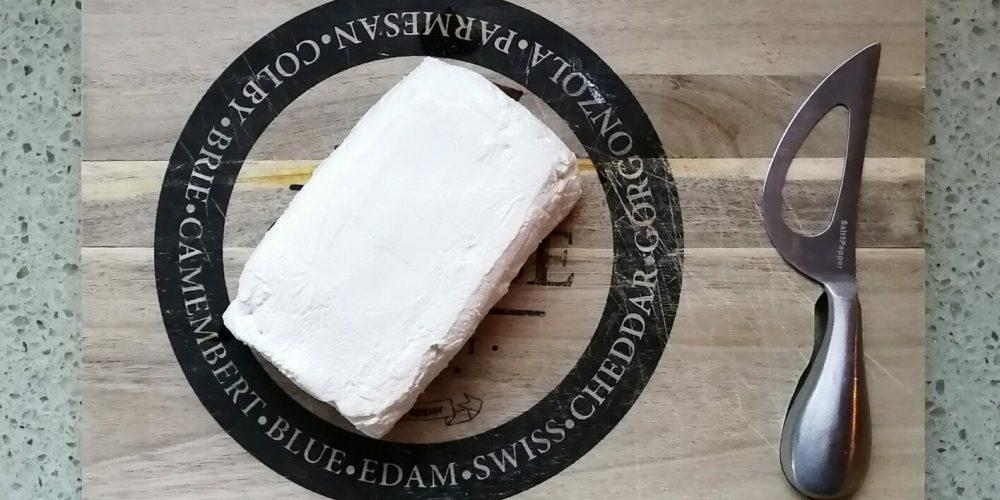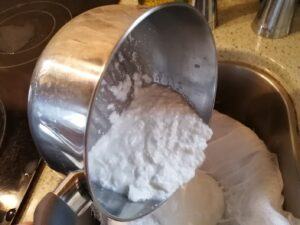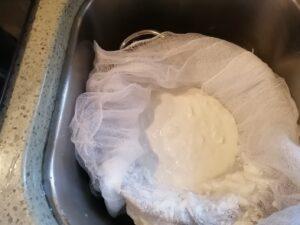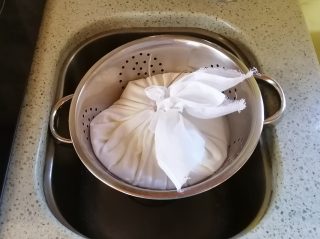How to Make Cream Cheese At Home

Everybody loves cream cheese. It’s so versatile, from simply spreading it on a cracker to making the most sophisticated sauces or cakes with it.
Check out our post on How to Make Cheese at Home to learn the art of making cheese. It’s a fun project for everyone.
For easy homemade cheese recipes check out our Cheese Making Recipes page.
If you are interested in the world of cheese making, visit our cheese Resource page and our How Cheese is Made post.
We review and suggest Cheese Making Kits here if you would like to get started with making cheese.
Enjoy!!!
Traditional Cream Cheese Versus Industrial Cream Cheese
Everybody loves cream cheese. It’s so versatile, from simply spreading it on a cracker to making the most sophisticated sauces or cakes with it.
Most of us are familiar with industrially produced cream cheese, like Philadelphia cream cheese. Traditionally produced cream cheese is hard to find. Making it yourself might get you hooked because, not only is it simple to make, but you will also see a huge difference in flavour. Before we start, let’s explore the difference between traditional and industrially produced cream cheese.
Industrially produced cream cheese
Industrially produced cream cheese is a blend of different ingredients. It’s a type of processed cheese that is not made from fresh milk. These are the typical ingredients:
- Pasteurized Nonfat Milk and Milk Fat
- Whey Protein Concentrate
- Cheese Culture
- Salt
- Whey
- Stabilizers (Xanthan and/or Carob Bean and/or Guar Gums)
- Sorbic Acid as a Preservative
- Vitamin A Palmitate
When you look at my article about how cheese is made, you will see that regular cheese is made with rennet, which coagulates the milk. This cream cheese doesn’t need rennet because the dry ingredients (like whey protein concentrate, milk fat,and stabilizers) create a mix that resembles making cake dough. Although the cheese contains culture as an ingredient, most brands don’t contain any active bacteria when you consume it since the end product is being re-pasteurized in order to increase the shelf life.
Traditionally produced cream cheese
Traditionally produced cream cheese has 4 ingredients: milk, cream, active bacterial culture and rennet. If you make more than you can consume within 2 weeks, it is best to vacuum pack the extra cheese or freeze it. Since the bacterial culture is active, the cheese will have a very pleasant flavour and smell and it will continue to develop flavour. The extra cream will make it naturally creamy without the gummy texture that the guar/xanthan gum products cause.
Let’s get started!
Recipe:
Ingredients to make approx. 400 g/ 14 oz cream cheese:
- 6 cups (1.4 L/ 1.5 qrt) of homo milk (7 parts)
- 2 1/2 cups (0.6 L/ ¾ qrt) of whipping cream ( 3 parts)
- 2 tbsp of buttermilk, or ¼ tsp of freeze dried culture
- ⅛ of a rennet tablet or one drop of liquid rennet dissolved in ¼ cup of cold water
- 2 tsp of salt ( or to your taste)
Tools needed:
- Pot to comfortable hold the milk
- Thermometer
- Cheesecloth
Procedure:
- Combine the milk and the cream in a clean pan. Slowly heat it to 25 C/ 77 F
- Stir in the culture
- Stir in the rennet
- Cover the pot and let the culture acidify the milk for 24 hours, or if you own a pH meter, until the pH is below 4.5.
- If you don’t have a pH meter, taste the milk after 24 hours to make sure it tastes sour. The milk should be coagulated and look like yogurt.
- Slowly stir the coagulated milk, now called curd, and heat it to 50 C/ 122 F. This step is optional. The heating will help to drain the cheese faster and it will reduce the activity of the culture and will make your cream cheese last longer. You can skip this step, if you want to be done earlier.
- Line a pasta strainer with a cheesecloth and pour the curd into it. Close the cheese cloth with a string and let it drain. You can speed up the draining by squeezing the cloth with your hands or by adding some weight, like a water bottle, onto the cheese cloth. The draining can take anywhere from 6 to 10 hours, it depends on the type of milk that you use (homo or non-homo, pasteurized, or raw milk). It is important that the cheese in the cloth becomes firm.
- Once the cheese in the cloth feels similar to the consistency of cream cheese, remove the cheese from the cloth and place into a bowl. You can now add salt, spices, garlic, or leave the cheese as is. Shape the cheese into a square or any shape you like. Wrap it in plastic wrap and refrigerate it. Once it cools down it is ready to be consumed.



Troubleshoot
- After pouring the cream cheese into the cheesecloth it doesn’t drain, even though it made a firm curd. In that case your curd never acidified enough. Reasons for that are that either your culture wasn’t active, your milk was too cold or you didn’t wait 24 hours before draining it. Make sure your milk stays at room temperature. Cover the pot, or place it beside a heater. If you did all that, then it must be your culture. If you used buttermilk, get a fresh bottle with a good expiry date on it, or buy a cheese starter.
- The curd turned sour, but never coagulated. That can happen when your rennet is not active anymore. In this case, you can try to pour the curd into the cheesecloth. If you are lucky you will retrieve some of the curds, but most of it will run through the cloth. Your rennet can lose activity if it is too old, or when it is mixed with chlorinated water.
Please let me know how your homemade cream cheese compares to store bought. I am curious to hear from you. Thanks and have fun!




